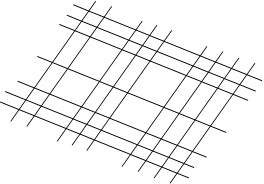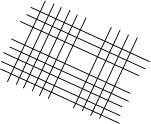The trick looks impressive, so be prepared for jaw-drops when you show this to kids and adults. But can you figure out how it works? I’ll give you a hint: think about how to represent placeholders of powers of 10…
Ok, so now watch the video:
Download Student Worksheet & Exercises
For the first example in the video, we represented the number 21 with a set of two lines and then with one line. Then we turned 90 degrees and added the number 13 on top by drawing one line followed by a set of three lines.
But what do the lines really mean? Remember my hint about placeholders? Well, the lines are really placeholders for the following multiplication:
21 x 13 = (2×10 + 1)(1×10 + 3)
Instead of writing out the numbers like the problem above, we simply draw lines to mean the same thing. If you were to cross-multiply that problem, we get a scary thing that looks like this when we group it in powers of ten:
(2×10 + 1)(1×10 + 3)= 2*102 + (2×3 +1)x10 + 3 = 273
The answer of 273 comes from figuring out there are 2 units of 100 (or 102), 7 units of 10, and 3 units of 1. Those are the intersection points of the lines we drew.
Exercises
- 23 x 45
- 56 x 72
- 52 x 26
- 62 x 49
- 67 x 92
For the following, write out the problems to solve and then solve them:




